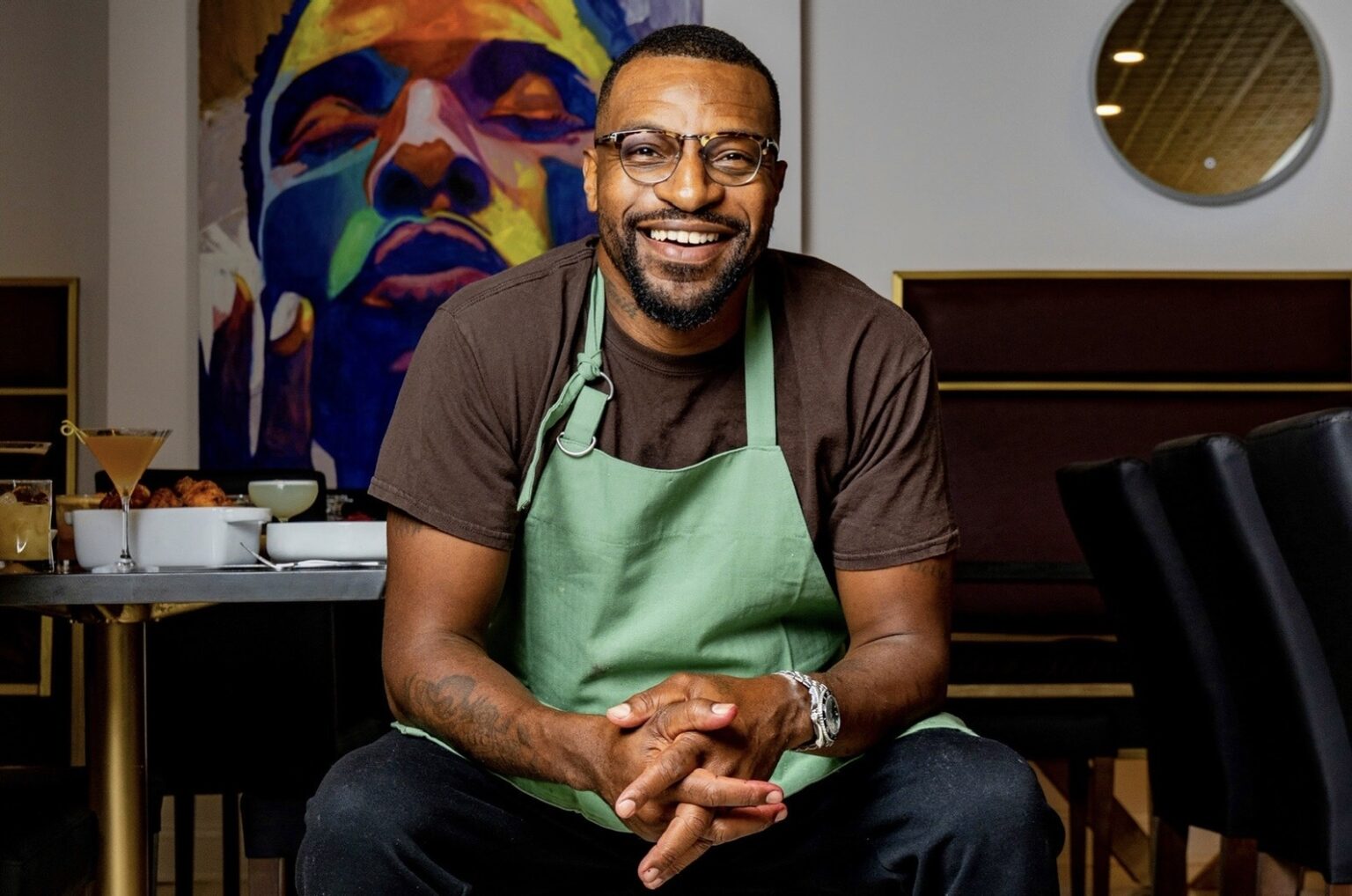Musical notes float through the air, infusing 29 Markle Ct with life’s moods, seasons and flavors. The sultry trumpet of jazz legend Miles Davis is sure to grace the downtown Bridgeport restaurant more than once during Damon “Daye” Sawyer’s 12 to 13-hour shift.
“We play music throughout service, all throughout the day when we’re prepping, when I’m thinking about ingredients and when I’m planning new menus,” says the restaurant’s co-owner and executive chef. “Music is heavily a part of what we do as a whole, from inception to creation to writing menus, to the dining experience.”
As the culinary force at 29 Markle Ct, the former professional keys and trumpet player selects a playlist as diverse and distinctive as the menu. “It’s my playlist. It’s probably about 1,000 records on there, and it’s very meticulously thought out. I want people to feel a certain way when they are dining in the space,” Sawyer continues.
“I’m a huge Miles fan. I’m a huge Pharoah Sanders fan. But it’s not just jazz. There’s blues. There’s soul. There’s alternative music and a lot of different sounds.”
Applause for Opening Act
The music, menu and service draw crowds to the Bridgeport restaurant in numbers greater than 29 Markle Ct’s partners expected for a new fine-dining establishment. Sawyer, Wesly S. Arbuthnott and Ishalee Green officially opened at the 29 Markle Ct location in November 2022.
The chef shares why the initial welcome surprised him. “I guess how receiving the community and outlying towns have been to something completely different, something that I think Bridgeport has probably never seen before.”
The Connecticut Restaurant Association put 29 Markle Ct on its list of finalists for the 2023 CRAzies Awards in the Newcomer category. The restaurant receives accolades from patrons and food critics. In his June review, Connecticut Magazine’s James Gribbon said, “Word is, it’s a hit.”
“It’s been overwhelming and a little nerve-racking because you have to keep up with the consistency that people expect from the restaurant,” says Sawyer. “We consider ourselves on the high-end spectrum of dining. Our menu reflects that, and so does our service and experience.”
As impressive as 29 Markle Ct’s early success is the fact that the three partners built a Black-owned business without outside help. “We don’t have any investors or things like that. This is all on our own dollar,” Sawyer notes.
“I think people didn’t think it was possible to have such a dining experience provided by people of color, honestly.”
The restaurant delivers a welcoming atmosphere from the art-covered walls to the cozy banquettes and glittering bar. “I think people are shocked, surprised, and excited that Bridgeport now has an actual dining scene like they haven’t had in the past.”
The globally-inspired food and drinks offer unique takes on culturally diverse cuisines. Chef Sawyer mentions the recently added Puerto Rican mofongo, a mashed plantain dish, as one example of the creativity and diversity coming from the kitchen.
“No one is doing anything remotely like what we’re doing on our menu. It’s the kind of thing people aren’t expecting from us. I think the ingredients, the seasonings and the techniques we use are just different.”
By Phyllis Armstrong


